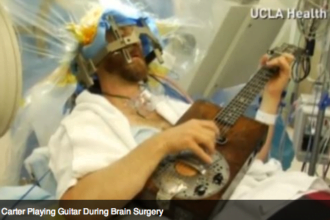 The HIMSS conference last week was an exciting glimpse into the future of healthcare and healthcare technology. Fortunately, I was able to attend and witness the passion behind patient engagement and enthusiasm for innovative ideas.
The HIMSS conference last week was an exciting glimpse into the future of healthcare and healthcare technology. Fortunately, I was able to attend and witness the passion behind patient engagement and enthusiasm for innovative ideas.
 The HIMSS conference last week was an exciting glimpse into the future of healthcare and healthcare technology. Fortunately, I was able to attend and witness the passion behind patient engagement and enthusiasm for innovative ideas.
The HIMSS conference last week was an exciting glimpse into the future of healthcare and healthcare technology. Fortunately, I was able to attend and witness the passion behind patient engagement and enthusiasm for innovative ideas.
This year, HIMSS had over 30,000 attendees. With a conference that large, it is nearly impossible to stay on top everything happening, but I routinely checked Twitter for the latest news. Whether it was learning about the New Orleans water contamination or a robot participating in the Harlem Shake, Twitter kept me on top of any breaking HIMSS news. In the overflow room during Bill Clinton’s speech, one could see tons of tiny glows from smartphone screens as people scrambled to update their Twitter accounts. Eric Topol, a keynote speaker and well-known cardiologist and researcher, even scolded the crowd for not being active on Twitter. It was a conversation piece; when others saw my tweets or a picture I posted, they felt compelled to talk to me more about social media.
While I could usually be found at the Fathom booth, discussing the importance of digital marketing for healthcare, I was able to attend a few HIMSS Twitter chats. Throughout these chats, it struck me that an underlying issue for healthcare technology and organizations is using Twitter to truly engage consumers and establish a unique voice within their industry.
During one of these Twitter chats, I discovered that only 21% of healthcare providers have a social media site. Social media, including Twitter, can be intimidating for a new healthcare technology company or an MD who would like to interact with patients more efficiently. With this in mind, here are the top five Twitter tips I overheard at HIMSS:
1) “Think like a patient.” It seems simple enough, but can difficult to implement. Write interesting posts that are relatable. We have all been patients, so tap into what you would like to hear from a healthcare professional on Twitter.
2) “If you have to choose between being consistent or good – be good.” Twitter guru Fred Trotter (@fredtrotter) is exactly right. Frequently, people ask how often they should tweet and how important is consistency. The truth is, don’t post on Twitter just because you usually post twice per day and haven’t posted yet that day. Only tweet when you have something valuable to say.
3) “Be filters for other people.” Fred Trotter also said this phrase, which could be an angle for your Twitter profile. The Internet moves entirely too quickly to always be the one “breaking” news, but adding insightful comments will help you differentiate your profile. There is also a surplus of information available on Twitter: Be the one that filters through this information and provides only what is valuable to a specific group of followers.
4) “Tweet pitch is the new elevator pitch.” This advice comes from blogger John Lynn (@techguy).When it comes to reaching out to the press, Twitter is a great option to foster a relationship. Bloggers at this meet-up all agreed that they would appreciate those who reached out to them through Twitter. It also shows creativity to fit your pitch in 140 characters or less.
5) “Just do it!” Stealing Nike’s tagline, Lynn encouraged everyone to not be afraid to post a tweet or blog post. Don’t overthink it. By getting your message out to a mass audience, people will give you feedback that can ultimately help you improve your writing and social media strategy.
Establishing a voice on Twitter can take time and may include some trial and error, but having this access to engage patients directly and on their own terms is invaluable.








